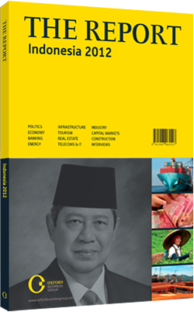Waking up to tourism: Aceh blends history, architecture and reminders of the 2004 tsunami
There are plenty of idyllic tourist spots in the Indonesian archipelago, some of them topping the wish lists of tourists worldwide. Less known but finally in bounds is a fascinating new option: Aceh. The semi-autonomous region at the westernmost point in the country is emerging from decades of isolation, and both locals and visitors are waking up to the possibilities of tourism.
TIME FOR A CHANGE: Aceh is best known as the biggest victim of the South-east Asian tsunami in 2004. The death toll was impossible to count but likely more than 200,000 people, according to Indonesian authorities. Large sections of Banda Aceh, the provincial capital, were ruined. The tsunami turned out to be more than just a natural disaster – it was a catalyst for change. Aceh had been suffering from a decades-long conflict between the central government and local separatists, but the tsunami accelerated peace talks, which resulted in Aceh becoming a semi-autonomous region with more power than Indonesian’s provinces. Aceh gets 70% of income from its natural resources and is following aspects of sharia law.
Aceh’s resistance movement now is seen as another chapter in a local history rich with tales of outsiders and resistance. Resources such as natural gas and pepper and Aceh’s proximity to the Malacca Straits have over the centuries brought Chinese, Portuguese, Dutch and British attempts to control the area. Now that it is peaceful, however, tourism is on the rise. The new tsunami museum is one of the most striking buildings, and the remaining visual evidence of the disaster, as well as Aceh’s older history, have become a major draw.
ARCHITECTURE: Banda Aceh’s downtown is a tidy and walkable core, bisected by the curving Sungai Krueng Aceh River. Modern commerce is found mostly on the east bank, and the west built around the Baiturrahman Mosque, one of the two most striking structures in town and a major reason to visit. The mosque was built by the Dutch as a friendly gesture during the Aceh War in the 19th century, and was unharmed by the 2004 tsunami, adding a sense of permanence to its spiritual credibility among locals. Baiturrahman was built between 1879 and 1881, and with elements of Moghul and Dutch colonial architecture. Muslim traders from India in the 11th century established Aceh as a port of call and brought with them their belief system.
Because of Islam’s long history in Aceh some of the oldest mosques in South-east Asia are found close to Banda. Those experiments yielded odd architectural combinations that expand the notion of what a mosque can look like, such as using layered pagoda roofing. The Indrapuri Mosque, about an hour outside the city, is thought to be the oldest in the country. Instead of having a minaret its architects simply built a staircase to the top of the pyramid-shaped roof.
NEW ARCHITECTURE: Aceh’s most popular tourist attraction, the Aceh Tsunami Museum, is a four-story oval cylinder perched on stilts to reflect the local building style and encased in a white-and-grey geometric lattice reminiscent of woven wicker. The grey and white strands are sleek and modern but also a nod to the tradition of geometric patterns in Islamic architecture. The museum cost $7.4m, and many said government money would be better spent resettling families still in camps at the time. Conservationists argued that two historical buildings, albeit decrepit ones, should not have been razed to make way for the museum. But moving the building to another site was not an option according to its designers – the museum is built on one of the highest points in Aceh, which adds symbolic meaning but also means it could serve as a shelter should another major tsunami strike.
The project has matured into a popular attraction. Visitors enter the building through a tunnel accented with the sound of running water. Stairs lead to exhibits on upper floors, the highlight of which is an electronic simulation room providing the feeling of being swamped by a tsunami. The museum is there to ensure Aceh does not forget its legacy. But its presence and presentation are also an indication that Aceh is ready to show the world the entirety of what it has to offer.
You have reached the limit of premium articles you can view for free.
Choose from the options below to purchase print or digital editions of our Reports. You can also purchase a website subscription giving you unlimited access to all of our Reports online for 12 months.
If you have already purchased this Report or have a website subscription, please login to continue.

